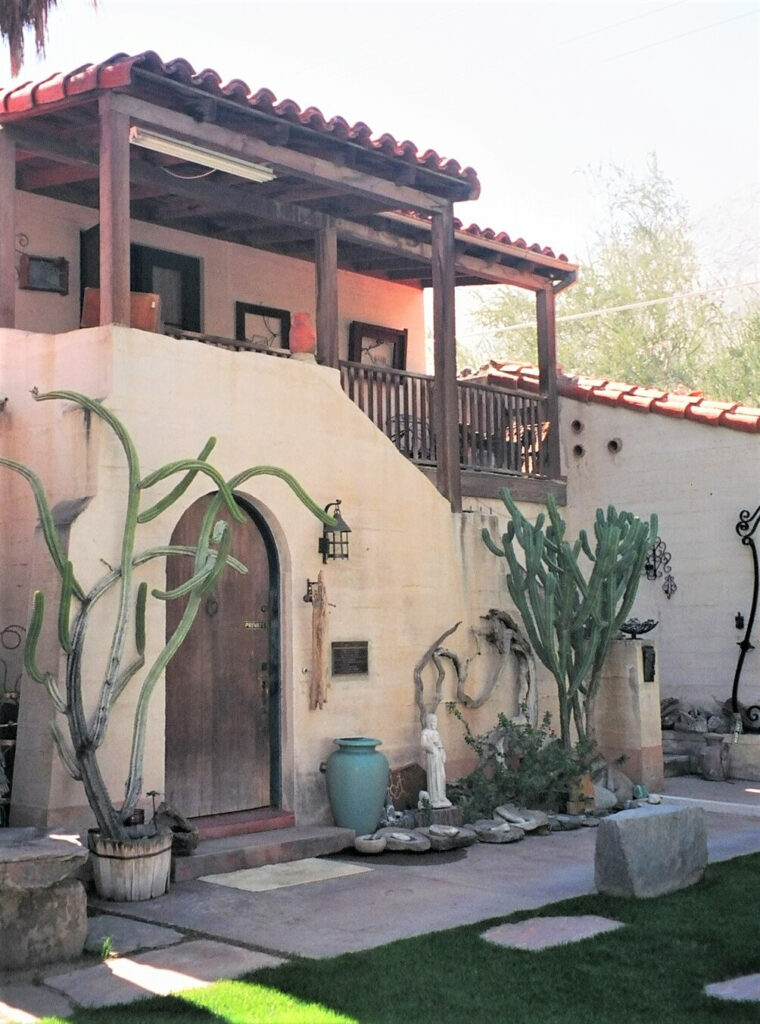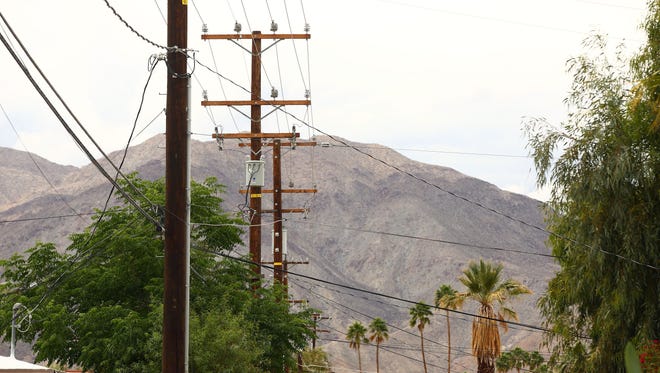[ad_1]
Back in the 1950s, when Palm Springs locals thought of cacti, succulents and other desert plants, they automatically thought of Patricia and Chester “Slim” Moorten, owners and founders of Moorten Botanical Garden on South Palm Canyon Drive.
The Moortens not only provided the desert landscaping for many of the Coachella Valley’s rich and famous homeowners; they were responsible for landscaping the route of the Palm Springs Aerial Tramway.
They were also called upon to create a desert setting for a new amusement park in Orange County that would be known the world over as Disneyland.
Pat Moorten had become a can-do woman in Palm Springs who knew what she wanted. According to “The Patricia Moorten Story” by Christopher Griffin in Profile Weekly Magazine, she said: “I knew what I wanted to do from the time I was quite young. As a young girl I had built a very fascinating garden in Ohio, but I maintained that someday, I would build a botanical garden of desert plants.”
The fact that Ohio has almost no desert flora didn’t stop her. Born Patricia Haliday in January 1920, she waited until she was 17 years old and hopped on a train that brought her out West in 1937. She settled in Los Angeles to study botany and horticulture at both USC and UCLA, making frequent forays out into the deserts. She once told The Desert Sun, “For me, the desert plants were the greatest challenge; they’re the highest form of plant life on Earth.”
In a day when few women were accepted in the professional world, Patricia became a research botanist. While working at a botanical garden in Santa Monica, she met Chester “Cactus Slim” Moorten, a desert landscaping contractor and designer. Patricia knew about Slim and his work with desert plants, and she arranged to be introduced. Their passion for deserts brought them together, and they married in 1940.
Slim was a real Western character—a former orphan from Washington state who, as a young man, made a living hunting, fishing and trapping. He also worked as a lumberjack and on the railroad before leaving the Pacific Northwest.
In 1927, he relocated to Hollywood. He was tall, very thin, and had an ability to force his body into all sorts of weird contortions. He was hired on the spot by Mack Sennett Studios, where he became one of the Keystone Kops.
As a stuntman and character actor, he worked in silent movies and early talkies, including movies with Buster Keaton and W.C. Fields. Unfortunately, his poor diet, lean frame and long hours did not help the tuberculosis he had contracted—and, at one point, he was given three months to live.
Slim immediately left the movie business and moved to the desert for his health. He started mining gold in what is now Joshua Tree National Park. Moorten’s Mill site is still a noted attraction there, a short hike down a wash from the park’s Cottonwood Visitor Center. Nothing remains but a few old pieces of equipment scattered about.
After five years, mining took a back seat in terms of his interests. He collected different varieties of cacti from all over the desert, even going down into Baja California. Moorten soon was making more money driving around selling cacti than others were making from mining.
His health improved, and he settled in Palm Springs, where he began selling plants in 1938. Chester “Cactus Slim” Moorten lived another 42 years, until his death in 1980.
He and his bride, Patricia, opened their first nursery, Museo del Desierto, on five acres in downtown Palm Springs. In 1942, the Moortens, moved their cactus museum north on Palm Canyon Drive.
As more and more celebrities established homes in the area, the Moortens were called upon to create landscaping for clients including Frank Sinatra, Bing Crosby, Red Skelton, Lily Pons and Walt Disney, with whom they developed a close association. In addition to all their work at Disneyland, they were consultants for Disney’s The Living Desert movie.
In 1955, they purchased three acres on South Palm Canyon Drive. It included a Spanish Colonial Revival two-story home built in 1929 for Stephen Willard, a renowned local nature photographer/artist.

There, in 1957, Slim and Patricia established what has become Moorten Botanical Garden, at 1701 S. Palm Canyon Drive. Originally called Desertland, today’s Moorten Botanical Garden has more than 3,000 varieties of desert plants and the world’s first “Cactarium.” The nature trail passes cacti and plants from American and worldwide deserts. The Willard/Moorten Home is the centerpiece for what would become a special place for weddings and other private parties and events. Several TV shows have been shot on the grounds and lawn of the home.
Patricia Moorten developed an international reputation for her work. She wrote the highly regarded Desert Plants for Desert Gardens, which was selected as an official guide to the Coachella Valley. She and her husband traveled the world, giving presentations and designing landscaping. For example, they were invited by Hilton Hotels to do the hotel grounds in Cairo, Egypt. Patricia was also on the first tram car to ascend Mount San Jacinto in 1963.
Very active in pioneering civic organizations, Patricia Moorten was co-founder and board member of the Desert Museum (now the Palm Springs Art Museum). She was also on the board of the Palm Springs Historical Society and Palm Springs Women’s Press Club, and she served as president of the National League of American Pen Women. She spent time as a Palm Springs commissioner of parks and recreation, was an ambassador of the Palm Springs Chamber of Commerce, and brought the PTA to the Palm Springs Unified School District.
Clark Moorten, their son, is himself an expert in desert plants of the spiny variety, and is now owner/operator of Moorten Botanical Gardens.
“My mom was a walking encyclopedia about Palm Springs,” Clark said. “For many years she enjoyed greeting visitors in her lovely desert garden setting, now a favorite wedding locale.”
Patricia Haliday Moorten died at age 90 on July 7, 2010, of natural causes. She and her husband were both honored with stars on the Palm Springs Walk of Stars.
Sources for this article include “The Patricia Moorten Story,” Profile Weekly Magazine, by Christopher Griffin; Palm Springs Confidential by Howard Johns, Barricade Books, 2004; Desert Plants for Desert Gardens by Patricia Moorten, Best West Publications, 1969; and The Desert Sun.
[ad_2]
Source link




